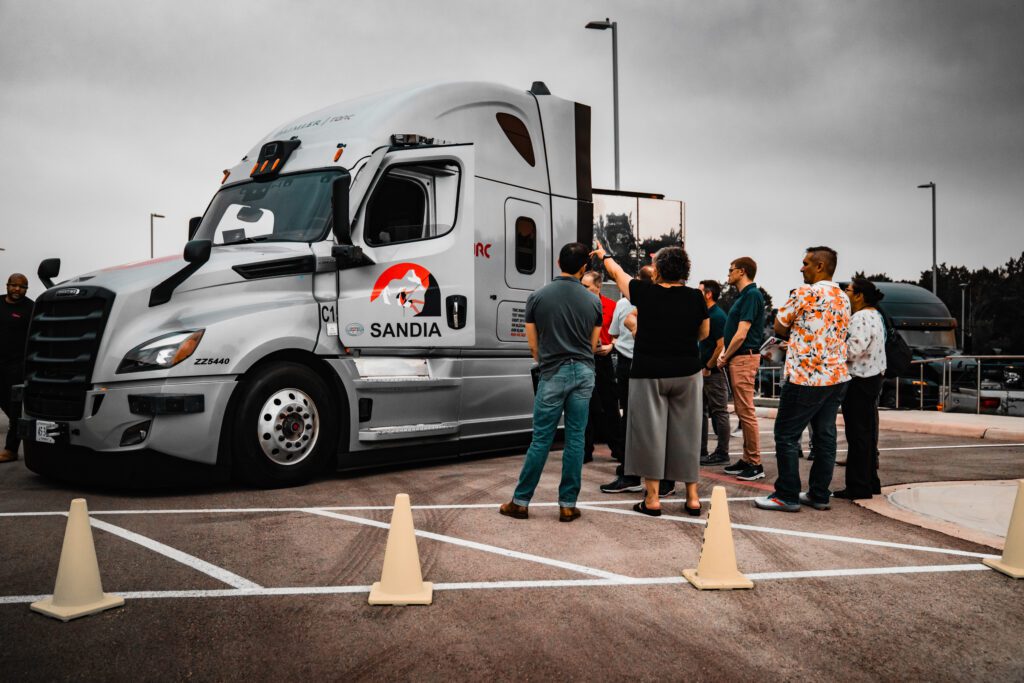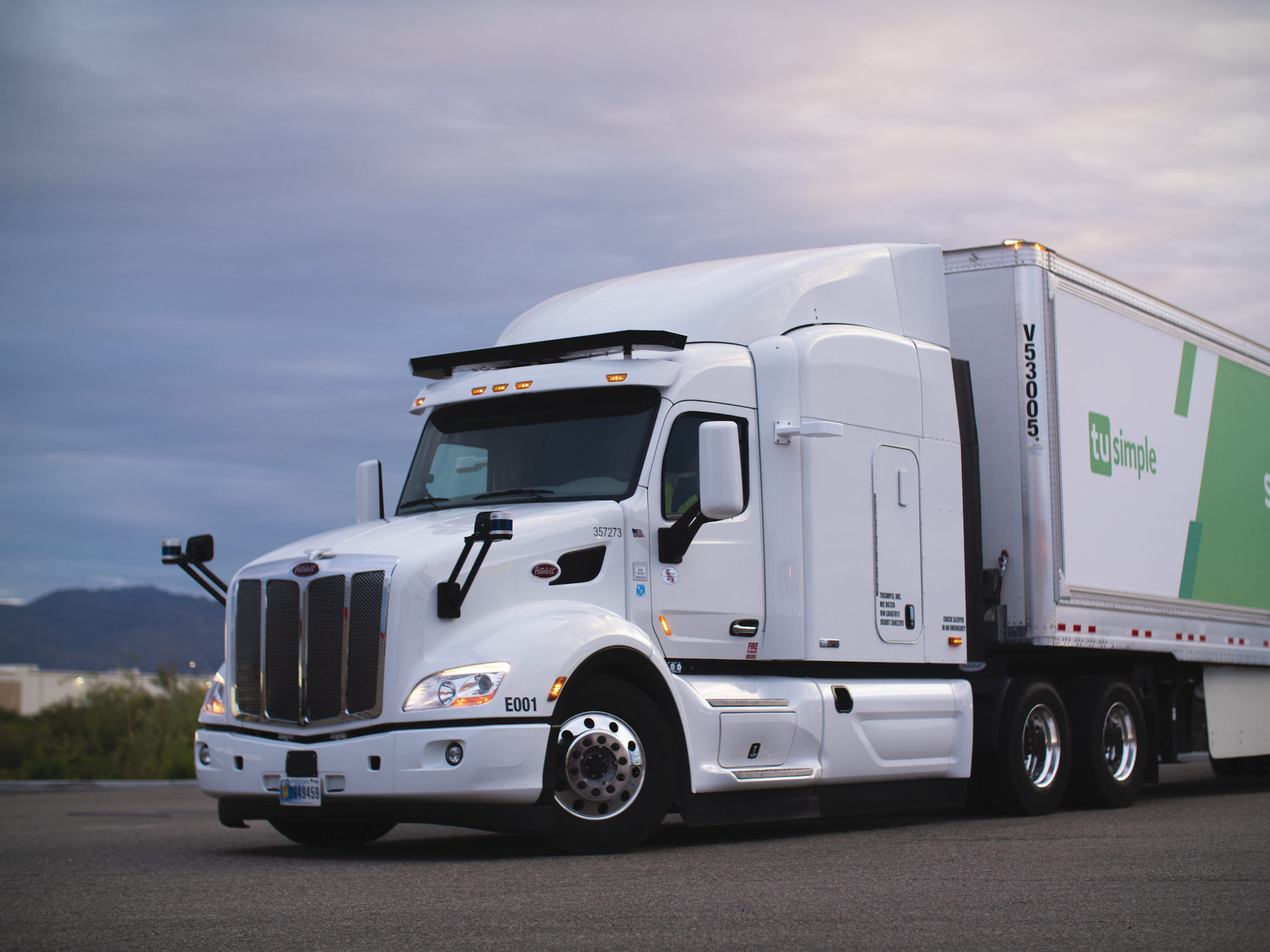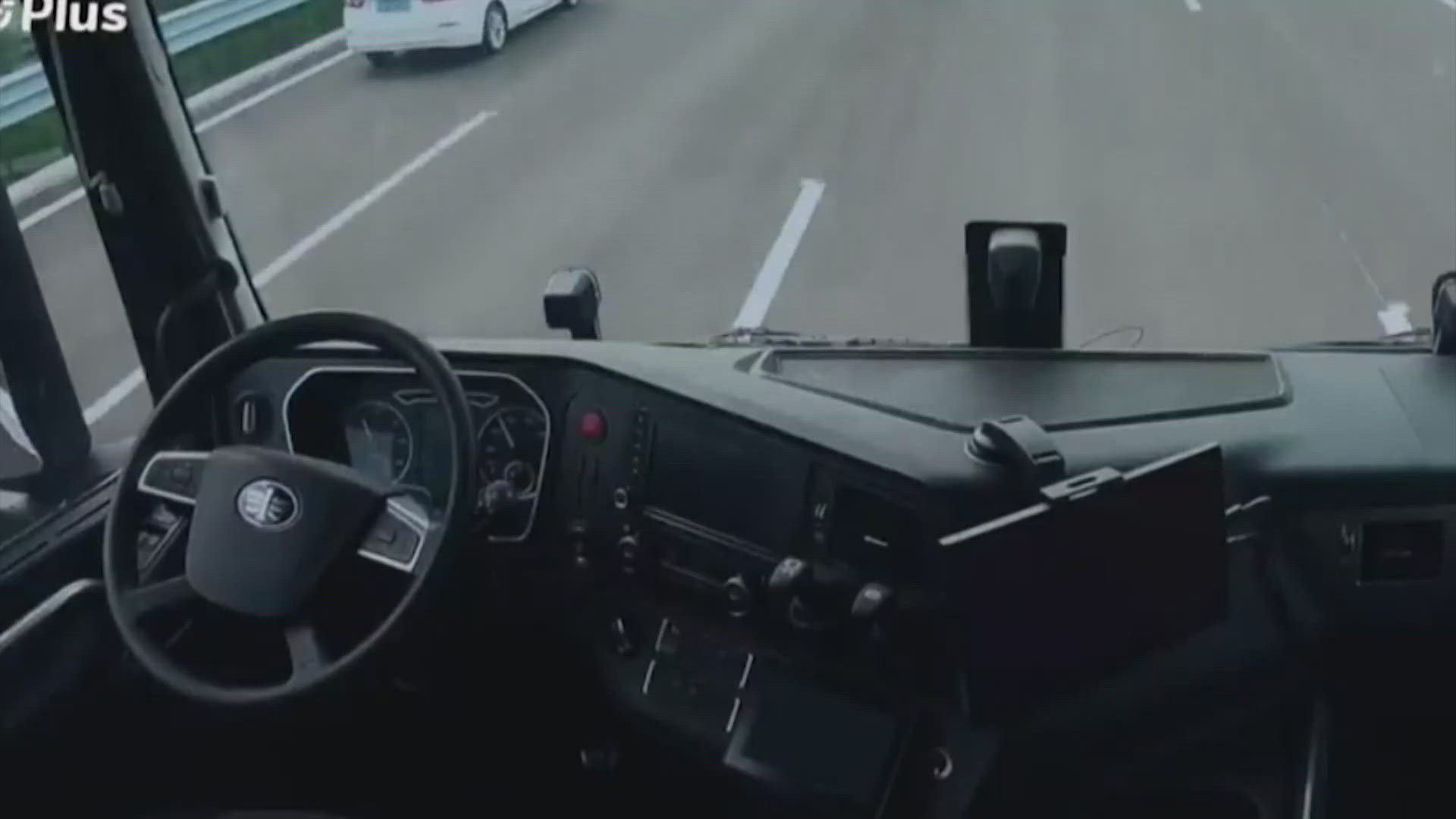Self-Driving Semi Trucks For Sale: A Comprehensive Guide to Acquiring Autonomous Fleet Technology types.truckstrend.com
The rumble of diesel engines and the vast stretches of highway have long defined the backbone of global commerce. Today, that landscape is undergoing a revolutionary transformation. Enter the self-driving semi truck – not merely a futuristic concept, but an emerging reality that promises to redefine logistics, supply chains, and the very nature of freight transport. For forward-thinking businesses and fleet operators, the question is no longer if autonomous trucks will integrate into their operations, but when and how to acquire this groundbreaking technology. This comprehensive guide delves into the world of "Self-Driving Semi Trucks For Sale," exploring what it means to invest in this cutting-edge solution, its myriad benefits, the practical considerations, and the path to successful adoption.
Understanding the Autonomous Trucking Landscape: What’s "For Sale"?
Self-Driving Semi Trucks For Sale: A Comprehensive Guide to Acquiring Autonomous Fleet Technology
When we talk about "Self-Driving Semi Trucks For Sale," it’s crucial to understand that this isn’t a traditional dealership model. Unlike purchasing a conventional truck, acquiring autonomous capabilities often involves a deeper engagement, typically through strategic partnerships, subscription models, or "Truck-as-a-Service" (TaaS) agreements with specialized technology developers. These developers integrate their sophisticated autonomous driving systems (ADS) into existing truck chassis from major manufacturers like Peterbilt, Freightliner, and Volvo.
The autonomy levels are defined by the Society of Automotive Engineers (SAE) International, ranging from Level 0 (no automation) to Level 5 (full automation under all conditions). Currently, the primary focus for commercial deployment is Level 4 (L4) autonomy. L4 trucks can perform all driving tasks under specific conditions (e.g., geofenced highways, favorable weather), with no human intervention required in those operational design domains (ODDs). While a safety driver may still be present in early deployments for monitoring, the vehicle is capable of handling the driving itself. True Level 5 autonomy, where the truck can drive anywhere a human can, remains a long-term aspiration. Therefore, when considering "for sale," you are primarily looking at L4 solutions from companies like Waymo Via, TuSimple, Aurora, Plus, Kodiak Robotics, and Embark, among others, typically offered as part of a service or fleet integration package rather than an outright single-unit purchase.
The Compelling Benefits of Investing in Self-Driving Semi Trucks
The allure of autonomous trucking extends far beyond technological novelty. For businesses, the benefits translate directly into operational efficiencies, cost savings, and a competitive edge:
- Increased Efficiency & Productivity: Autonomous trucks can operate virtually 24/7, limited only by maintenance and fueling schedules. This continuous operation significantly increases asset utilization compared to human-driven trucks constrained by hours-of-service regulations.
- Reduced Operating Costs: While initial investment is high, long-term savings are substantial. Autonomous systems optimize acceleration and braking, leading to improved fuel efficiency. Furthermore, the potential reduction in labor costs for long-haul routes (where drivers are often the largest operational expense) offers significant savings.
- Enhanced Safety: A vast majority of accidents are attributed to human error, fatigue, or distraction. Autonomous systems, with their array of sensors, AI, and precise control, offer the potential for a dramatic reduction in collisions, leading to fewer fatalities, injuries, and property damage.
- Addressing Driver Shortage: The trucking industry faces a persistent and worsening driver shortage. Autonomous trucks offer a scalable solution to meet growing freight demands without relying solely on human drivers, freeing human drivers for more complex local deliveries or supervisory roles.
- Predictable Logistics & Supply Chain Optimization: With consistent speeds, optimized routing, and fewer unplanned stops, autonomous trucks provide greater predictability in delivery times, allowing for more precise supply chain planning and reduced inventory costs.
- Environmental Benefits: Optimized driving patterns and improved fuel efficiency contribute to lower emissions, aligning with corporate sustainability goals.

Navigating the Purchase Process: How to Acquire Autonomous Truck Technology

As mentioned, "buying" a self-driving semi truck isn’t a simple transaction. It’s a strategic adoption process, often involving these steps:
- Research & Due Diligence: Identify leading autonomous trucking technology providers. Understand their specific operational design domains (ODDs), safety records, technological maturity, and business models.
- Pilot Programs & Partnerships: Many providers offer pilot programs where a limited number of autonomous trucks are integrated into your existing fleet for testing and evaluation. This allows you to assess performance, integrate with your operations, and build trust. This often transitions into a long-term partnership or service agreement.
- Define Your Use Case: Autonomous trucks are currently best suited for "hub-to-hub" or "middle-mile" long-haul routes on major highways. Identify specific lanes or corridors within your network where L4 autonomy can provide the most immediate benefit.
- Contract Negotiation: Engage in detailed discussions regarding service level agreements (SLAs), operational support, data sharing, liability, pricing structures (per-mile, subscription, or a combination), and potential equity partnerships.
- Integration & Infrastructure Planning: Work with the technology provider to plan for necessary infrastructure changes at your depots, including mapping, connectivity, and potentially specialized maintenance facilities.
- Regulatory Compliance: Ensure your operations comply with evolving state and federal regulations concerning autonomous vehicle deployment. This often involves working closely with the technology provider, who will have expertise in this area.

Key Considerations Before Buying/Adopting
Before committing to autonomous trucking technology, several critical factors warrant careful consideration:
- Regulatory Landscape: Autonomous vehicle laws vary significantly by state and country and are constantly evolving. Ensure your chosen routes and operational plans are legally permissible.
- Infrastructure Requirements: While autonomous trucks drive themselves, they require robust digital mapping, strong cellular connectivity, and potentially specialized maintenance and fueling/charging infrastructure at depots.
- Insurance & Liability: The framework for insurance and liability in autonomous vehicle accidents is still developing. Clarify responsibility with your technology provider.
- Technological Maturity & Reliability: While advanced, the technology is still relatively new. Understand the system’s performance limitations, especially in adverse weather conditions or complex traffic scenarios. Plan for potential downtime and redundancy.
- Integration with Existing Operations: How seamlessly will autonomous trucks integrate with your current dispatch, logistics software, and human workforce? Training for human supervisors, remote operators, and maintenance staff will be essential.
- Public Perception & Acceptance: As a visible technology, public acceptance is crucial. Consider how your adoption of autonomous trucks will be perceived by customers, employees, and the general public.
- Scalability: Can the solution grow with your business needs? What are the timelines and costs associated with expanding your autonomous fleet?
Types and Applications of Autonomous Semi Trucks
While the core technology is similar, autonomous semi trucks are primarily categorized by their application:
- Hub-to-Hub (Middle-Mile/Long-Haul): This is the dominant application, where L4 autonomous trucks travel long distances on highways between distribution centers or transfer hubs. Human drivers typically handle the "first mile" (pickup from origin) and "last mile" (delivery to destination) in urban environments, or they are transferred to the autonomous truck at a hub.
- Specific Route Deployment: Some companies focus on highly specific, pre-mapped, and often less complex routes, allowing for faster and more reliable deployment.
- Different Truck Classes: While heavy-duty Class 8 trucks are the primary focus, autonomous technology is also being explored for medium-duty trucks for regional or specialized logistics.
Most autonomous truck solutions involve retrofitting or integrating an autonomous driving system (ADS) onto a standard Class 8 truck chassis from established manufacturers. This leverages existing truck reliability and service networks while adding the cutting-edge autonomous capabilities.
Tips for Successful Adoption and Operation
Implementing autonomous trucks is a journey, not a single purchase. Here are tips for success:
- Start Small and Learn: Begin with a pilot program on a single, well-defined route to gather data, identify challenges, and refine your operational model before scaling up.
- Foster Strong Partnerships: Collaborate closely with your chosen autonomous technology provider. Their expertise is invaluable for successful deployment and ongoing support.
- Invest in Your Workforce: Train your existing human drivers for new roles (e.g., local last-mile deliveries, remote supervision, or maintenance of autonomous systems). Address concerns and communicate clearly.
- Monitor and Optimize: Continuously collect data on performance, safety, and efficiency. Use insights to optimize routes, refine operations, and maximize ROI.
- Stay Informed on Regulations: The regulatory landscape is dynamic. Keep abreast of changes in state and federal laws to ensure continued compliance.
- Plan for Contingencies: Despite advanced technology, unexpected situations can arise. Have clear protocols for manual takeover, remote assistance, and emergency response.
Challenges and Solutions in Autonomous Trucking
No transformative technology comes without hurdles. Understanding them is key to successful adoption:
- Challenge: Regulatory Hurdles. Patchwork of state laws, lack of federal guidelines, and varying acceptance levels.
- Solution: Active participation in regulatory discussions, working with providers who engage in policy advocacy, and starting deployments in states with clear frameworks.
- Challenge: Public Trust & Acceptance. Concerns about safety, job displacement, and the "robot truck" concept.
- Solution: Transparent communication, public education campaigns, showcasing safety records, and emphasizing new job creation (e.g., remote operators, maintenance technicians).
- Challenge: High Initial Investment. The cost of the technology and necessary infrastructure can be substantial.
- Solution: Leverage TaaS models to reduce upfront capital expenditure, focus on routes with clear ROI, and explore government grants or incentives where available.
- Challenge: Complex Maintenance & Diagnostics. Specialized skills are needed for the advanced sensor suites and AI systems.
- Solution: Rely on the technology provider’s support network, invest in specialized training for in-house technicians, and consider maintenance agreements.
- Challenge: Adverse Weather Conditions. Heavy rain, snow, or fog can obscure sensors and impact performance.
- Solution: Advanced sensor fusion (LiDAR, radar, cameras), robust AI algorithms trained on diverse data, and clear operational limits or a human fallback in extreme conditions.
- Challenge: Cybersecurity Risks. Autonomous systems are connected and vulnerable to cyber threats.
- Solution: Implement robust cybersecurity protocols, regular software updates, secure data transmission, and strong encryption.
Practical Advice and Actionable Insights
For any business considering self-driving semi trucks, the most crucial advice is to approach this strategically. Do not view it as a simple truck purchase, but as an evolution of your logistics capabilities. Engage early with technology providers, clearly define your business objectives, and understand that success hinges on collaboration and adaptability. Begin with a clear, well-defined pilot project, rigorously measure its performance, and use those insights to inform broader deployment. Legal and financial experts specializing in emerging technologies will be invaluable partners in navigating complex contracts and investment models.
Estimated Price Table: Self-Driving Semi Truck Solutions (Illustrative)
Please Note: The "purchase" of a self-driving semi truck is rarely a direct retail transaction. The costs below represent estimated ranges for engaging with autonomous trucking solutions, which typically involve Truck-as-a-Service (TaaS) models, per-mile charges, or long-term partnership agreements rather than an outright vehicle title transfer. These figures are highly variable based on contract terms, fleet size, operational complexity, and the specific technology provider.
| Company/Provider | Truck Model (Chassis) | Autonomy Level | Estimated Cost Range (Annual/Per-Mile) | Acquisition Model | Key Features/Notes |
| :————— | :——————– | :————- | :————————————- | :—————- | :———————————————————————————————————————————————————————————————————————————————————————————————————————————————————————————————————————————————————————————————————————————————————————————————————————————————————————————————————————————————————————————————————————————————————————————————————————————————————————————————————————————————————————————————————————————————————————————————————————————————————————————————————————————————————————————————————————————————————————————————————————————————————————————————————————————————————————————————————————————————————————————————————————————————————————————————————————————————————————————————————————————————————————————————————————————————————————————————————————————————————————————————————————————————————————————————————————————————————————————————————————————————————————————————————————————————————————————————————————————————————————————————————————————————————————————————————————————————————————————————————————————————————————————————————————————————————————————————————————————————————————————————————————————————————————————————————————————————————————————————————————————————————————————————————————————————————————————————————————————————————————————————————————————————————————————————————————————————————————————————————————————————————————————————————————————————————————————————————————————————————————————————————————————————————————————————————————————————————————————————————————————————————————————————————————————————————————————————————————————————————————————————————————————————————————————————————————————————————————————————————————————————————————————————————————————————————————————————————————————————————————————————————————————————————————————————————————————————————————————————————————————————————————————————————————————————————————————————————————————————————————————————————————————————————————————————————————————————————————————————————————————————————————————————————————————————————————————————————————————————————————————————————————————————————————————————————————————————————————————————————————————————————————————————————————————————————————————————————————————————————————————————————————————————————————————————————————————————————————————————————————————————————————————————————————————————————————————————————————————————————————————————————————————————————————————————————————————————————————————————————————————————————————————————————————————————————————————————————————————————————————————————————————————————————————————————————————————————————————————————————————————————————————————————————————————————————————————————————————————————————————————————————————————————————————————————————————————————————————————————————————————————————————————————————————————————————————————————————————————————————————————————————————————————————————————————————————————————————————————————————————————————————————————————————————————————————————————————————————————————————————————————————————————————————————————————————————————————————————————————————————————————————————————————————————————————————————————————————————————————————————————————————————————————————————————————————————————————————————————————————————————————————————————————————————————————————————————————————————————————————————————————————————————————————————————————————————————————————————————————————————————————————————————————————————————————————————————————————————————————————————————————————————————————————————————————————————————————————————————————————————————————————————————————————————————————————————————————————————————————————————————————————————————————————————————————————————————————————————————————————————————————————————————————————————————————————————————————————————————————————————————————————————————————————————————————————————————————————————————————————————————————————————————————————————————————————————————————————————————————————————————————————————————————————————————————————————————————————————————————————————————————————————————————————————————————————————————————————————————————————————————————————————————————————————————————————————————————————————————————————————————————————————————————————————————————————————————————————————————————————————————————————————————————————————————————————————————————————————————————————————————————————————————————————————————————————————————————————————————————————————————————————————————————————————————————————————————————————————————————————————————————————————————————————————————————————————————————————————————————————————————————————————————————————————————————————————————————————————————————————————————————————————————————————————————————————————————————————————————————————————————————————————————————————————————————————————————————————————————————————————————————————————————————————————————————————————————————————————————————————————————————————————————————————————————————————————————————————————————————————————————————————————————————————————————————————————————————————————————————————————————————————————————————————————————————————————————————————————————————————————————————————————————————————————————————————————————————————————————————————————————————————————————————————————————————————————————————————————————————————————————————————————————————————————————————————————————————————————————————————————————————————————————————————————————————————————————————————————————————————————————————————————————————————————————————————————————————————————————————————————————————————————————————————————————————————————————————————————————————————————————————————————————————————————————————————————————————————————————————————————————————————————————————————————————————————————————————————————————————————————————————————————————————————————————————————————————————————————————————————————————————————————————————————————————————————————————————————————————————————————————————————————————————————————————————————————————————————————————————————————————————————————————————————————————————————————————————————————————————————————————————————————————————————————————————————————————————————————————————————————————————————————————————————————————————————————————————————————————————————————————————————————————————————————————————————————————————————————————————————————————————————————————————————————————————————————————————————————————————————————————————————————————————————————————————————————————————————————————————————————————————————————————————————————————————————————————————————————————————————————————————————————————————————————————————————————————————————————————————————————————————————————————————————————————————————————————————————————————————————————————————————————————————————————————————————————————————————————————————————————————————————————————————————————————————————————————————————————————————————————————————————————————————————————————————————————————————————————————————————————————————————————————————————————————————————————————————————————————————————————————————————————————————————————————————————————————————————————————————————————————————————————————————————————————————————————————————————————————————————————————————————————————————————————————————————————————————————————————————————————————————————————————————————————————————————————————————————————————————————————————————————————————————————————————————————————————————————————————————————————————————————————————————————————————————————————————————————————————————————————————————————————————————————————————————————————————————————————————————————————————————————————————————————————————————————————————————————————————————————————————————————————————————————————————————————————————————————————————————————————————————————————————————————————————————————————————————————————————————————————————————————————————————————————————————————————————————————————————————————————————————————————————————————————————————————————————————————————————————————————————————————————————————————————————————————————————————————————————————————————————————————————————————————————————————————————————————————————————————————————————————————————————————————————————————————————————————————————————————————————————————————————————————————————————————————————————————————————————————————————————————————————————————————————————————————————————————————————————————————————————————————————————————————————————————————————————————————————————————————————————————————————————————————————————————————————————————————————————————————————————————————————————————————————————————————————————————————————————————————————————————————————————————————————————————————————————————————————————————————————————————————————————————————————————————————-
Frequently Asked Questions (FAQ) about Self-Driving Semi Trucks For Sale
Q1: Are self-driving semi trucks legal everywhere?
A: No. The legality varies significantly by state within the U.S. and by country globally. Some states have specific legislation permitting Level 4 autonomous truck testing and deployment, while others have restrictions or no clear framework. Always verify regulatory compliance for your intended operational design domain (ODD).
Q2: How much do self-driving semi trucks cost?
A: A direct "purchase price" is rare. Instead, companies typically offer their autonomous technology through Truck-as-a-Service (TaaS) models, subscription fees, or per-mile charges. These costs can range from a few dollars per mile to substantial annual fees depending on the service level, route, and volume. The overall investment for a fleet operator will include these service fees, plus potentially infrastructure upgrades and operational integration costs.
Q3: What level of autonomy is currently available for commercial use?
A: Level 4 (L4) autonomy is the primary focus for commercial deployment in the trucking industry. These trucks can operate fully autonomously within defined operational design domains (ODDs), such as specific highway stretches, typically with a safety driver onboard in early deployments. Level 5 (full automation in all conditions) is still a research goal.
Q4: Who are the main providers of self-driving semi truck technology?
A: Key players in the L4 autonomous trucking space include Waymo Via, TuSimple, Aurora, Plus, Kodiak Robotics, and Embark (though Embark ceased operations, its tech contributed to the field). These companies partner with established truck manufacturers like Peterbilt, Freightliner, and Volvo to integrate their autonomous driving systems.
Q5: Will self-driving trucks replace all human truck drivers?
A: Unlikely in the near future. Autonomous trucks are currently best suited for long-haul, hub-to-hub routes. Human drivers will still be crucial for the "first mile" and "last mile" in complex urban environments, specialized deliveries, and potentially for supervisory or remote operation roles. The technology aims to address the driver shortage and optimize logistics, not necessarily to eliminate the human element entirely.
Q6: How safe are self-driving semi trucks?
A: Autonomous truck developers claim their systems are designed to be significantly safer than human-driven trucks by eliminating human error, fatigue, and distraction. They use redundant sensor arrays (LiDAR, radar, cameras), advanced AI, and rigorous testing. While accidents can still occur, the goal is a substantial reduction in collision rates. Safety is the paramount concern for all developers.
Q7: How is maintenance handled for autonomous trucks?
A: Maintenance typically involves a collaborative effort. The truck chassis (engine, transmission, etc.) can be serviced through standard truck service networks. However, the specialized autonomous driving system (sensors, computers, software) often requires support from the technology provider, either through their own technicians, remote diagnostics, or specialized training for the fleet’s maintenance staff.
Q8: What’s the potential Return on Investment (ROI) for autonomous trucks?
A: ROI is realized through reduced operating costs (especially fuel and long-term labor savings), increased asset utilization (24/7 operation), improved safety (fewer accidents), and enhanced supply chain predictability. The payback period will vary greatly depending on the specific use case, the acquisition model, and the scale of deployment. Early adopters may see a longer ROI as the technology matures and scales.
Conclusion
The era of self-driving semi trucks is no longer a distant dream but a rapidly approaching reality for the logistics industry. While the concept of "Self-Driving Semi Trucks For Sale" differs from traditional vehicle acquisition, the opportunities they present for efficiency, safety, and addressing critical industry challenges are immense. For fleet operators and businesses, understanding the nuances of this evolving market – from the types of technology available to the critical considerations for adoption – is paramount. By embracing strategic partnerships, navigating the regulatory landscape, and meticulously planning for integration, companies can position themselves at the forefront of this transformative wave, driving not just freight, but the future of commerce itself. The journey to fully autonomous logistics is still unfolding, but the road ahead promises unprecedented levels of innovation and efficiency for those ready to embark upon it.
